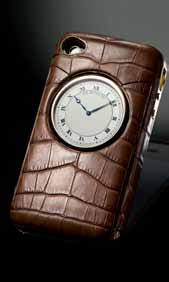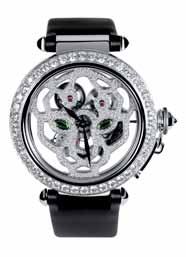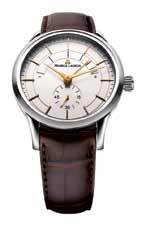The pocket watch is making an unexpected comeback; Delphine Stefens makes a selection
 The main reason for watches to move from pockets to wrists in the early twentieth century was practicality. Louis Cartier designed one of the first wristwatches for his aviator friend Alberto Santos-Dumont, who found it difficult to pull out his pocket watch while navigating his plane. It was a commercial hit and Cartier still features a Santos collection today.
The main reason for watches to move from pockets to wrists in the early twentieth century was practicality. Louis Cartier designed one of the first wristwatches for his aviator friend Alberto Santos-Dumont, who found it difficult to pull out his pocket watch while navigating his plane. It was a commercial hit and Cartier still features a Santos collection today.
The pocket watch was gradually replaced by the wristwatch but never fully ceased to exist and is now making an unexpected comeback. A watch nowadays is indeed much more about attractiveness than usefulness. Take De Bethune’s DBM alligator smartphone cover with an encased watch – with so many people checking their phones to find out the time of day, it is a bold reinvention of the pocket watch. Bell & Ross, on the other hand, channels the past with the PW1, or Pocket Watch 1, from its Vintage Collection. Founded just under twenty years ago, the brand looked to the early 1900s and the military for inspiration, yet the result of this nostalgic exercise is surprisingly modern. While the pocket watch could become the must-have accessory of the modern-day dandy or fashionista, it may also become a sound investment.
Those opting for a true antique or vintage specimen will find the value of pocket watches of highly praised manufacturers or brands has not increased as much as for wristwatches, because fewer people wear them these days – at least, for now. For the best of both worlds, consider a single-hand wristwatch by MeisterSinger, a brand launched ten years ago but inspired by seventeenth century single-hand clocks.









